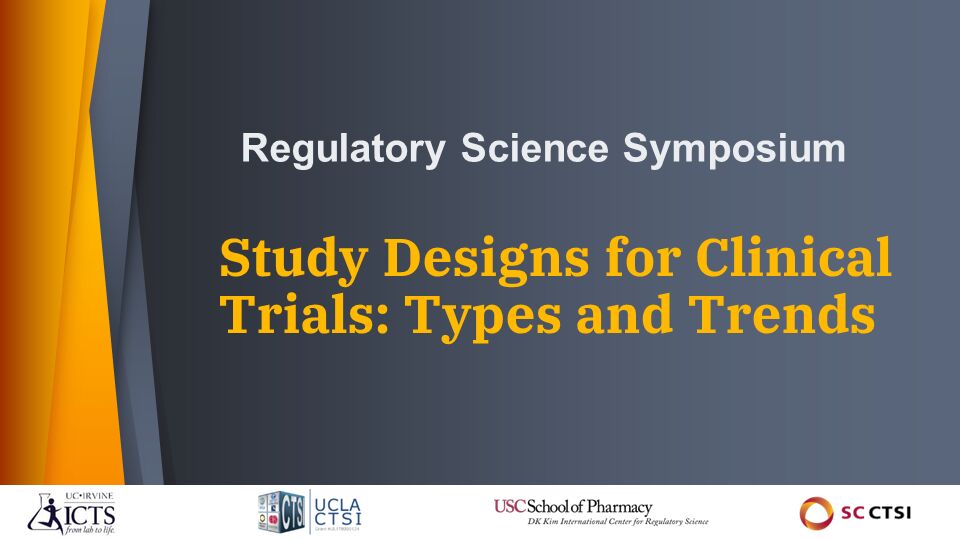- Objectives
- Review of study designs, including clinical trials
- Examples of study designs and clinical trials
- Alignment of study designs with a research question, data collection, and statistical analysis.
- What statistical methods are appropriate for study design and data collected?
- PICOT Criteria to Develop the Research Question
- P = Population
- I = Intervention/Exposure
- C = Comparison Group
- O = Outcome
- T = Time
- Spectrum of Study Designs
- Observation Study Defined
- Clinical studies where participants already belong to certain study groups rather than assigned by the investigators and often exposures or interventions are self-selected
- Association between exposures/interventions and outcomes may be biased by characteristics that differ between those that choose exposure vs. no exposure
- Cohort Study
- Involve individuals free of the outcome, including persons with and without exposure
- Follow forward in time to determine outcome
- Statistical methods: Chi-square, logistic regression, propensity scores
- Case-Control Study
- Select persons with (cases) and without (controls) outcome and then go back to determine their past exposure (before outcome occurred)
- Example: VRE in cirrhotic patients
- Statistical methods: Chi-square test, T-test or non-parametric Wilcoxon rank sum, and logistic regression
- Clinical Trial Defined
- Clinical study in which participants are assigned to receive intervention (or no intervention) so that researchers can evaluate effects of intervention on biomedical/health-related outcomes
- A cohort study where persons are “assigned” to exposures and followed for ascertainment of outcomes
- Not feasible when assigning to an exposure/intervention is not ethical
- Clinical study in which participants are assigned to receive intervention (or no intervention) so that researchers can evaluate effects of intervention on biomedical/health-related outcomes
- Quasi-Experimental Study
- Assign groups without randomization
- Considered as “natural” experiments
- Design takes advantage of what would already happening or a change in the natural setting; usually utilized in healthcare settings
- Comparator is the pre-implementation period
- Statistical methods: Regression model for counts
- Clinical Trial Designs: Parallel Group
- Parallel group: each participant is assigned to one and only one of the trial interventions
- Standard approach for most clinical trials
- Statistical methods: Non-parametric Wilcoxon signed rank within group, non-parametric Wilcoxon rank sum between group (major), and intervention effect sizes
- Parallel group: each participant is assigned to one and only one of the trial interventions
- Crossover
- Each participant receives both the experimental and comparator interventions, usually in randomized order, with a wash-out period in between interventions
- Each participant acts as their own control, which reduces the variability
- Disadvantages: greater likelihood of dropout; must be a stable disease under study; only appropriate for interventions that wash-out and have short-term outcomes
- Statistical methods: need to consider the correlated data, Paired t-tests, mixed effects regression model
- Cluster Randomized
- Definition: Unit of randomization is a group of persons rather than a single person
- Necessary for complex interventions in primary care, health promotion, community/public health settings i.e., schools
- Avoids contamination of intervention effects however requires more subjects and blinding is not possible
- Statistical methods: mixed effects linear regression models
- Clinical Trial Designs: Equivalence or Non-Inferiority Trials
- Trials that hypothesize that new intervention groups will demonstrate trial outcomes that are the same as (equivalency) or no worse than (non-inferiority) a currently standard intervention
- Appropriate if there is a standard and effective intervention available
- Allows the testing of the efficacy of interventions but requires the naming of an “equivalence or non-inferiority margin” that should have a clear clinical rationale
- Adaptive Intervention
- Conduct a sequential multiple-assignment randomized trial (SMART)
- Statistical Analysis Plan
- Ties directly back to your research questions, aims, and hypotheses
- Must address the following: dependent/outcome variables, independent variables, method and frequency of measurement
- Testing Differences Among Groups
- Certain statistical analyses would be more appropriate for particular comparisons
- For categorical data, groups are compared with chi-square tests that incorporate the matching (McNemar’s test for proportions)
- For continuous data, groups are compared with parametric or non-parametric tests
- Certain statistical analyses would be more appropriate for particular comparisons
- Survival Time Data
- Two components:
- Did the subject have the event (death)?
- What is the last time the subject was observed?
- Two components:
- Linear Regression (and Other Regression Models)
- Use linear regression to adjust for other variables
- Other Regression Models
- Continuous outcome: linear regression
- Dichotomous outcome: logistic regression
- Ordinal categorial outcome: ordinal logistic regression
- Nominal outcome (not ordered): multinomial logistic regression
- Count outcome: Poisson or negative binomial regression
- Survival outcome: Cox (proportional hazards) or other “survival” regression
- Questions?
Regulatory Science Virtual Symposium: “Study Design for Clinical Trials: Types and Trends” Session 2: CTSI Clinical Study Design Types (2023)
Regulatory Science
Study Design
Clinical Trials
Regulatory and Quality Sciences
Statistical Analysis
Wendy Mack, PhD
Director, Biostatistics, Epidemiology, and Research Design
Course Syllabus/Topics
Acknowledgements
Accompanying text created by Roxy Terteryan, RKS Project Administrator, SC CTSI (atertery@usc.edu) and Cyan Tan, Student Worker

